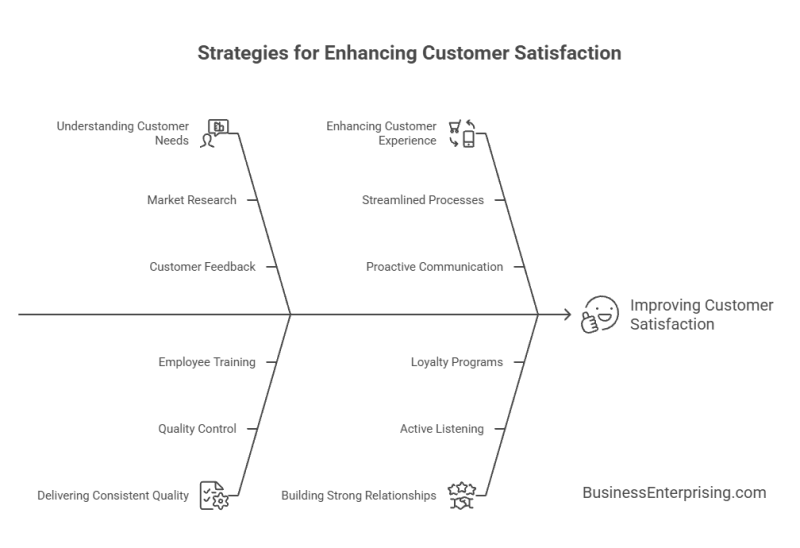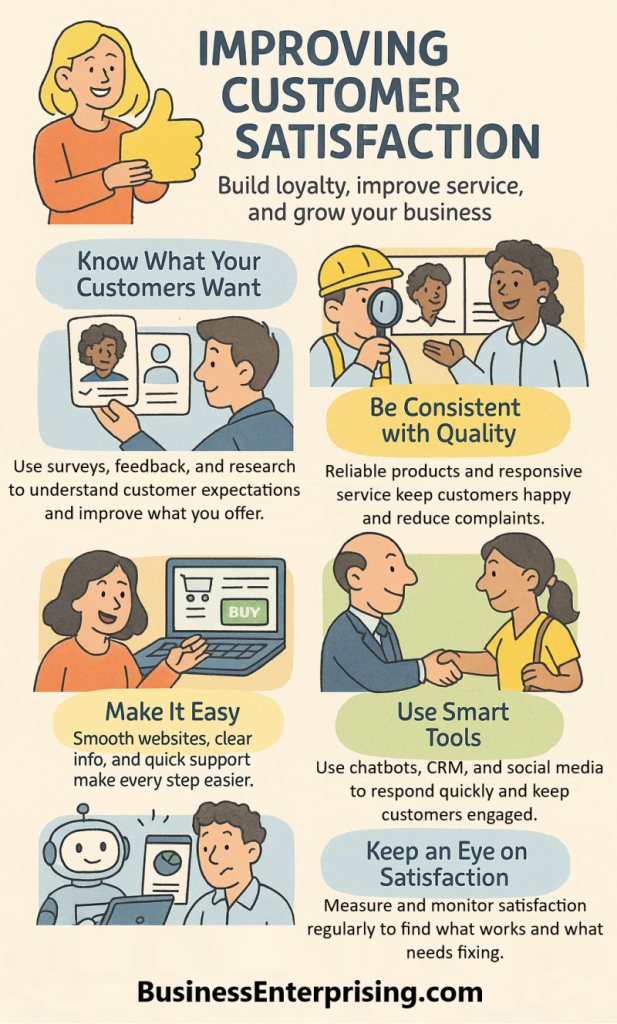
Understanding Customer Needs and Expectations
One of the fundamental steps in improving customer satisfaction is understanding your customers’ needs and expectations. By gaining insights into what your customers value, you can tailor your products, services, and interactions to meet their demands effectively. Conducting market research, analyzing customer feedback, and engaging directly with your clients are essential methods for gathering this information. Regularly collecting and analyzing customer data helps businesses stay attuned to evolving preferences and trends, ensuring that offerings remain relevant and appealing.
Furthermore, segmenting your customer base allows for more personalized service. Different customer groups may have unique needs and expectations, and addressing these nuances can significantly enhance satisfaction. Personalization can be achieved through targeted marketing, customized product recommendations, and tailored customer service interactions. By showing customers that you understand and value their individual preferences, you foster a deeper connection and increase their overall satisfaction.
Delivering Consistent Quality
Consistent quality in products and services is vital for maintaining customer satisfaction. Customers expect reliable performance and value for their money, and any deviations from these expectations can lead to dissatisfaction and negative reviews. Therefore, businesses must prioritize quality control and continuous improvement. Implementing robust quality assurance processes ensures that products meet or exceed customer expectations. Regularly reviewing and refining these processes helps identify potential issues before they impact customers.
In addition to product quality, service quality plays a crucial role in customer satisfaction. Training employees to provide exceptional customer service, addressing customer inquiries promptly, and resolving issues efficiently are key components of a quality service experience. Empowering employees with the tools and authority to make decisions in favor of customer satisfaction can lead to quicker resolutions and happier customers. Moreover, creating a culture of excellence where employees are motivated to go above and beyond for customers can significantly enhance satisfaction levels.
Enhancing the Customer Experience
The overall customer experience encompasses every interaction a customer has with your business, from the initial contact to post-purchase support. Improving this experience involves streamlining processes, reducing friction, and ensuring a seamless journey. For instance, optimizing your website for ease of use and mobile responsiveness can enhance the online shopping experience. Simplifying the checkout process, providing clear product information, and offering multiple payment options can also contribute to a smoother experience.
Furthermore, proactive communication is essential for maintaining customer satisfaction. Keeping customers informed about their order status, providing timely updates, and promptly addressing any issues or delays can prevent frustration and build trust. Utilizing customer relationship management (CRM) systems can help manage and track customer interactions, ensuring that communication is consistent and personalized. Additionally, offering multiple channels for customer support, such as phone, email, live chat, and social media, allows customers to choose their preferred method of communication, enhancing their overall experience.
Building Strong Relationships
Building strong relationships with customers is fundamental to improving satisfaction. Establishing trust and rapport encourages loyalty and long-term engagement. One effective way to build relationships is by actively listening to your customers. Encourage feedback through surveys, reviews, and direct conversations, and use this input to make meaningful improvements. Showing customers that their opinions matter and that you are committed to addressing their concerns can foster a sense of loyalty and appreciation.
Additionally, recognizing and rewarding customer loyalty can strengthen relationships. Implementing loyalty programs that offer exclusive benefits, discounts, or rewards for repeat purchases can incentivize continued engagement. Personalizing these rewards based on customer preferences and purchase history adds an extra layer of appreciation. Hosting events, webinars, or community forums where customers can interact with your brand and each other can also build a sense of community and belonging.
Leveraging Technology for Customer Satisfaction
Technology can be a powerful tool for improving customer satisfaction. Implementing advanced customer service solutions, such as chatbots and AI-powered support systems, can provide quick and efficient assistance to customers. These technologies can handle routine inquiries, freeing up human agents to focus on more complex issues. Additionally, utilizing data analytics to gain insights into customer behavior and preferences can help businesses make informed decisions and tailor their offerings.
Furthermore, social media platforms offer valuable opportunities for engaging with customers and addressing their concerns in real time. Actively monitoring and responding to social media interactions demonstrates that your business is attentive and responsive. Social media can also be used to share valuable content, updates, and promotions, keeping customers informed and engaged. By leveraging technology effectively, businesses can enhance the customer experience and improve overall satisfaction.
Measuring and Monitoring Customer Satisfaction
Regularly measuring and monitoring customer satisfaction is essential for identifying areas of improvement and tracking progress. Various metrics, such as Net Promoter Score (NPS), Customer Satisfaction Score (CSAT), and Customer Effort Score (CES), can provide valuable insights into customer perceptions. Conducting regular surveys and feedback forms allows businesses to gather direct input from customers and address any issues promptly.
Moreover, analyzing customer data and trends can help identify patterns and potential pain points. Utilizing analytics tools to track customer interactions, purchase behavior, and support requests can reveal valuable information about customer satisfaction levels. By continuously monitoring these metrics and making data-driven decisions, businesses can proactively address issues and enhance the overall customer experience.
Conclusion
Improving customer satisfaction is a multifaceted endeavor that requires a strategic and holistic approach. By understanding customer needs and expectations, delivering consistent quality, enhancing the customer experience, building strong relationships, leveraging technology, and measuring satisfaction, businesses can create an environment that fosters long-term loyalty and engagement. In conclusion, prioritizing customer satisfaction is essential for achieving sustained success and growth in today’s competitive marketplace. By implementing these strategies, businesses can build lasting relationships with their customers, drive profitability, and enhance their brand reputation. As customer expectations continue to evolve, staying attuned to their needs and consistently delivering value will ensure ongoing satisfaction and loyalty.


